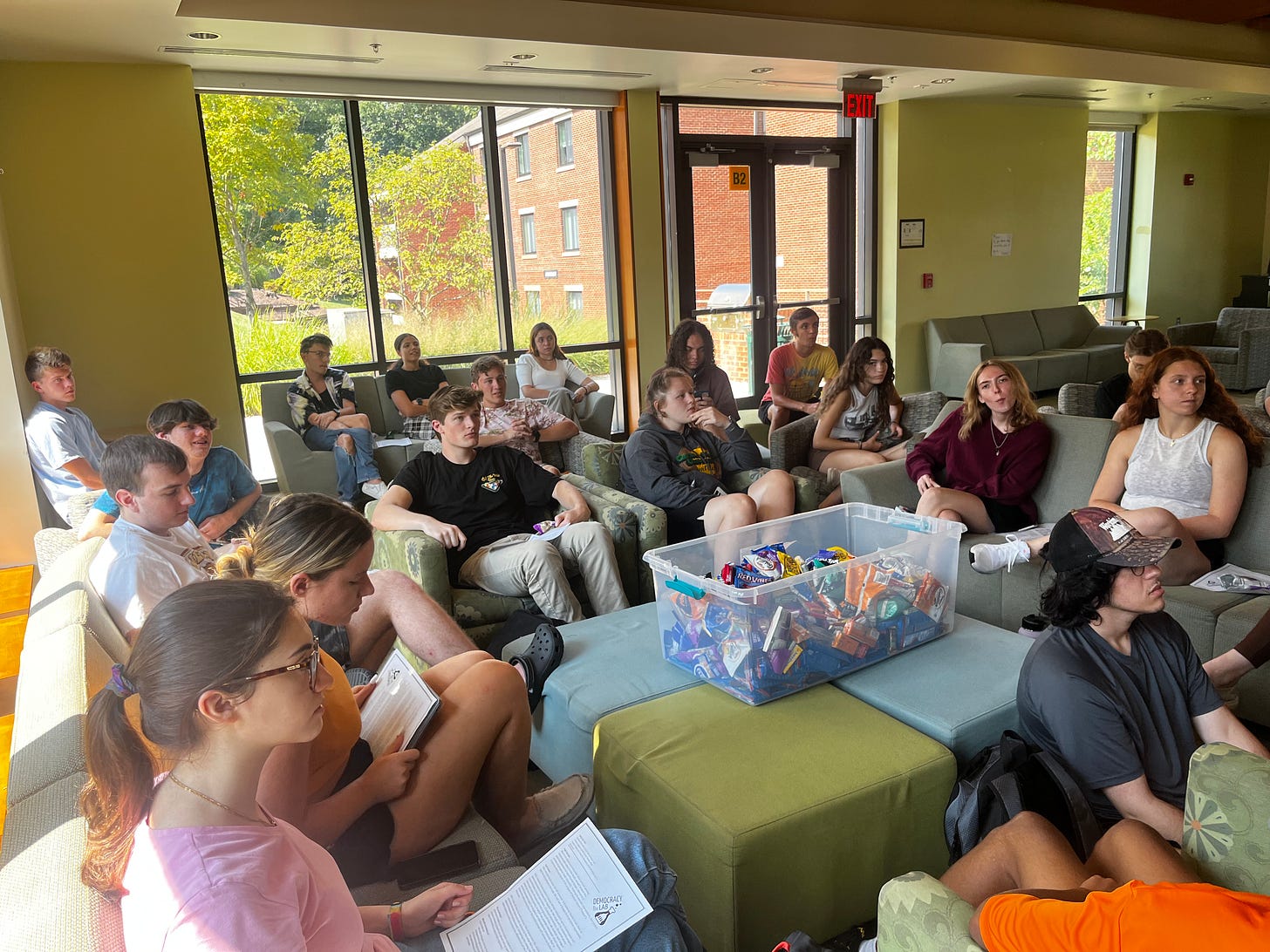College students face enormous barriers to voting. When you have a temporary address and an adopted community, the rules about where and how to legally cast a ballot can be downright daunting. But colleges and universities have a legal and moral mandate to help students vote. Good large-N studies, with data collected in 2006, show that the most effective ways for universities to encourage student voting is through in-person presentations to students. We wondered if this was still true for the current generation of very online students. So we set out to test it in a special way.
Taking advantage of political and institutional contexts
George Mason University is the largest public research university in Virginia with a diverse and politically engaged student population. According to Tufts University’s Center for Information & Research on Civic Learning and Engagement, in at least the last four federal election cycles, Mason students voted at rates 5 – 15 percent higher than college students nationally. But Virginia has state elections in off years. We saw 2023 as an opportunity to re-test the claim that presentations are the best way to turn out college students. Because if a good texting campaign could do it, that would be a whole lot cheaper to scale.
Our 2023 voting study had another interesting twist. We used the study as an experiential learning opportunity for a government learning community of first-year students. We trained about 20 first-year students in voter registration, public speaking, and social science research design. Students gave presentations and learned to analyze the data we collected through a year-long, hands-on project.
We also partnered with campus and local organizations. The League of Women Voters was instrumental in providing training and support to our effort to reach Mason students and stimulate their voting. In addition, we received encouragement and support from Mason’s office of Community Engagement and Civic Learning, which is a unit of the Provost’s Office.
Putting Sneakers on the Ground
We started by contacting all instructors at GMU who were scheduled to teach a fall class—about 5,000 of them—to ask them to enroll their class in the study. Of these, 197 classes enrolled, representing about 8,000 non-unique students. We received sanctions from the Mason IRB and Registrar’s office to ensure we were in compliance with student privacy and research ethics regulations. We sent consent forms to the students enrolled in the classes that had opted in. In the end, we had usable data from 545 students who consented for us to look up their voting history in public records.
We assigned treatments by classroom. Classes were randomly assigned to either receive a voting presentation from our team of first-year students, receive email encouragements and information about voting, or a control group. Our random assignment saw 201 students in the email group, 118 in the classroom canvassing group, and 148 in the control group. Students who were in multiple treatment groups were excluded from the analysis.
We found that the voting rate in the class canvass group was highest, at 45 percent. Students in the email group voted at a rate of 38 percent, and 34 percent of the control group voted. We verified voting by cross-referencing students with a purchased voter file from the Virginia Office of Elections. Looking at the effects of our treatments, we found that students in the canvassing group were 11 percent more likely to vote (p < 0.067), relative to the control group. Students in the email treatment group were no more likely to vote than those in the control group. The following graph shows the average marginal effects of each treatment, relative to the control group.
The Upshot
Our study confirmed the previous research—going into classrooms, encouraging students to vote, and giving them information about how to vote is an effective means of increasing voter turnout among college students. This holds even in a low salience local election among a generation of voters whose social and academic interactions take place online more often than any previous generation. The more things change, the more they stay the same.
The bad news is that low-cost strategies like emailing reminders are unlikely to be effective. But the good news is that we know what works. Even better is that a class of first-year government students got a first-hand taste of social science, data collection, scientific communication, and civic engagement at a scale students don’t usually see until they are much further into their academic careers. As a professor, I very much appreciate a project that hits the trifecta of being a rewarding teaching, research, and service experience.








Could I see the script you used (and/or) slides) in the classroom presentations??
edieg@umich.edu
Thank you for doing this study and writing it up! In-person, peer-to-peer outreach is the way to engage new voters, and we now have so many models from numerous schools for doing it effectively.